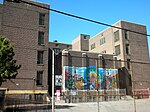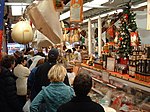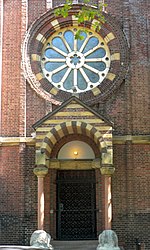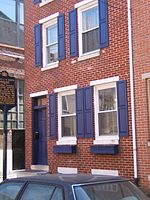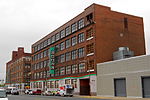Little Saigon, Philadelphia

One of the largest Vietnamese neighborhoods in Philadelphia is located in Passyunk Square, a neighborhood in South Philadelphia. The heart of the Vietnamese community is centered on the intersection of Eighth Street and Washington Avenue in South Philadelphia with "one of the largest Vietnamese populations on the east coast." and is a district where "... neon signs lure shoppers into grocery stores, restaurants and karaoke bars set back from the street in low-rise concrete strip malls. Shoppers pushing carts laden with rice noodles, bean cakes and imported spices and sauces pack suburban-style parking lots behind the complexes." The author further states that the Vietnamese are now (as of 2013) the largest ethnic community in the Washington Avenue/Passyunk Square section of the city and that the entire Vietnamese population of Philadelphia is larger than that of New York City.Southwest Philadelphia and Northeast Philadelphia also contain Vietnamese American neighborhoods. Mimicking Little Saigon is Baby Saigon, a small Vietnamese neighborhood located within in Whitman neighborhood of South Philadelphia. Meanwhile, the Vietnamese community has additionally expanded eastward across the Delaware River to Camden and Cherry Hill in New Jersey.
Excerpt from the Wikipedia article Little Saigon, Philadelphia (License: CC BY-SA 3.0, Authors, Images).Little Saigon, Philadelphia
South 8th Street, Philadelphia South Philadelphia
Geographical coordinates (GPS) Address Nearby Places Show on map
Geographical coordinates (GPS)
| Latitude | Longitude |
|---|---|
| N 39.9359481 ° | E -75.1569406 ° |
Address
South 8th Street 1039
19147 Philadelphia, South Philadelphia
Pennsylvania, United States
Open on Google Maps

